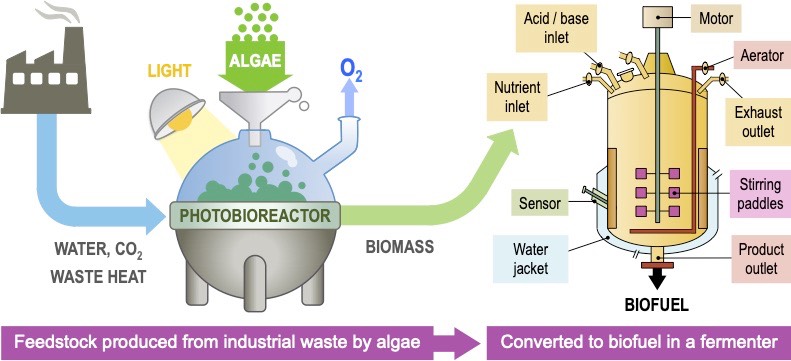Key Knowledge:
|
The anaerobic breakdown of glucose into pyruvate (via glycolysis) results in the production of a small amount of hydrogen carrier (NADH)
- In the presence of oxygen, this hydrogen carrier will be oxidised as part of the electron transport chain (i.e. becomes unloaded NAD)
- In the absence of oxygen, the carrier cannot be oxidised by mitochondria and stocks of the unloaded coenzyme will become depleted
Fermentation
Fermentation involves the conversion of pyruvate into an alternative carbon compound via a reaction that oxidises the hydrogen carrier
- This restores the stocks of unloaded coenzyme needed for glycolysis, allowing ATP production to continue in the absence of oxygen
- Fermentation is therefore considered to be a vital component of anaerobic respiration, as glycolysis could not otherwise be sustained
The products of fermentation differ between animals and plants or yeast:
- In animals, pyruvate is converted into lactic acid (lactate) – this reaction is reversible (pyruvate can be reformed when oxygen is present)
- In plants or yeast, pyruvate is converted into ethanol and carbon dioxide – this reaction is irreversible (the pyruvate cannot be reformed)

Anaerobic fermentation has many practical applications:
- In animals, fermentation is used to maximise the power of muscle contractions (allows energy capacity to exceed oxygen levels)
- In yeasts, fermentation is used in the production of alcoholic beverages and allows for dough to rise (leavening) when baking
Biofuels
Biofuels are an energy source produced from the anaerobic fermentation of biomass (organic material from plants and animals)
- Whereas fossil fuels are non-renewable as they form via exceedingly slow geological processes (over several million years), biofuels are derived from rapid biological processes and are therefore functionally renewable (provided there is a constant stock of reagents)
- Because the biomass is typically derived from the anabolic conversion of inorganic sources of carbon (i.e. carbon dioxide), there is a lower carbon footprint associated with its production (making it arguably better for the environment)
Biofuel production involves the growth of anaerobic microbes in an enclosed and sterilised vessel called a fermenter
- When provided with a source of biomass, the microbes will anerobically ferment this organic feedstock to produce the biofuel
- The fermenter distributes materials evenly within the chamber and controls the temperature, pH, levels of nutrients and wastes
- The biofuel can be collected from the fermenter after a fixed amount of time (batch cultivation) or ongoing (continuous cultivation)
The biomass used to produce biofuels (via anaerobic fermentation) can be sourced in a number of different ways:
- It can be produced from agricultural feedstocks (i.e. edible crops), however this requires the use of large amounts of arable land to produce the feedstock and can potentially drive up regional food costs (as less crops are being used as a traditional food source)
- It can also be produced from non-edible plant components and certain municipal wastes, however these have higher production costs
Algae is an alternative biomass source for anaerobic fermentation that does not require arable land and can operate at low costs
- Algae can photosynthesise and hence produce a stock of biomass (starch, glucose, cellulose) within contained photobioreactors

Bioethanol is a common biofuel that is used to supplement or replace traditional fossil fuels (e.g. gasoline) in fuel tanks
- Drawbacks of bioethanol include the fact that it has a lower energy content than fossil fuels, is harder to vaporise (so may be more difficult to use in colder temperatures) and is more likely to corrode materials (such as car engines) upon extended exposure